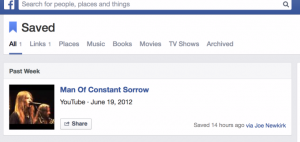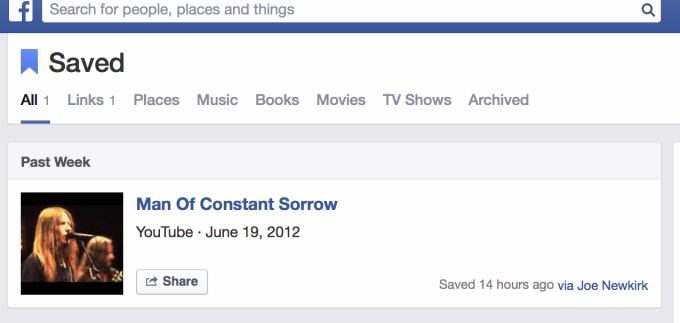Facebook began to target apps like Pocket back in 2013 when it introduced read-it-later features. Those features are meant to help people save content for the future. Now, the social network is boosting up read-it-later’s functionality with a new save button.
 Even though it may never actually roll out, TechCrunch is reporting that the site is at least testing a save features that will allow users to hold onto links in a specific section of their profile. By doing this, people can more easily find things that interest them and their friends can also stay up to date with what everyone is looking at.
Even though it may never actually roll out, TechCrunch is reporting that the site is at least testing a save features that will allow users to hold onto links in a specific section of their profile. By doing this, people can more easily find things that interest them and their friends can also stay up to date with what everyone is looking at.
In 2012 and 2013, Facebook attempted to integrate these features but it never worked. However, now that the network is working in the news sector with its Paper application, it would make sense for a feature like this to finally go public.
The saved section on a user’s homepage will show the link, title, and image that corresponds to the content, as well as who in their friends list saved it. Even though one of the best things about Facebook is that it is really all about browsing and scrolling through one’s feed, coming across interesting content can be an issue since you are taken out of the feed in order to check it out.
However, if there is a save button attached to every post, users will no longer have to worry about jumping out of their feed to view content or forgetting about a link when they have time to check it out later in the day.
Sharing news is quickly becoming a major part of Facebook, and a large portion of visits to news sites still come from the social network. This means that the more features Facebook introduces, the better the platform will be for sharing.
Question – Will Facebook actually introduce the save feature, or is this just one of the many things that it tries out?
Summary: Facebook is testing a new save feature that will allow people to hold onto posts for later. This would build upon the read-it-later functionality that was first introduced last year.
image credit: techcrunch


